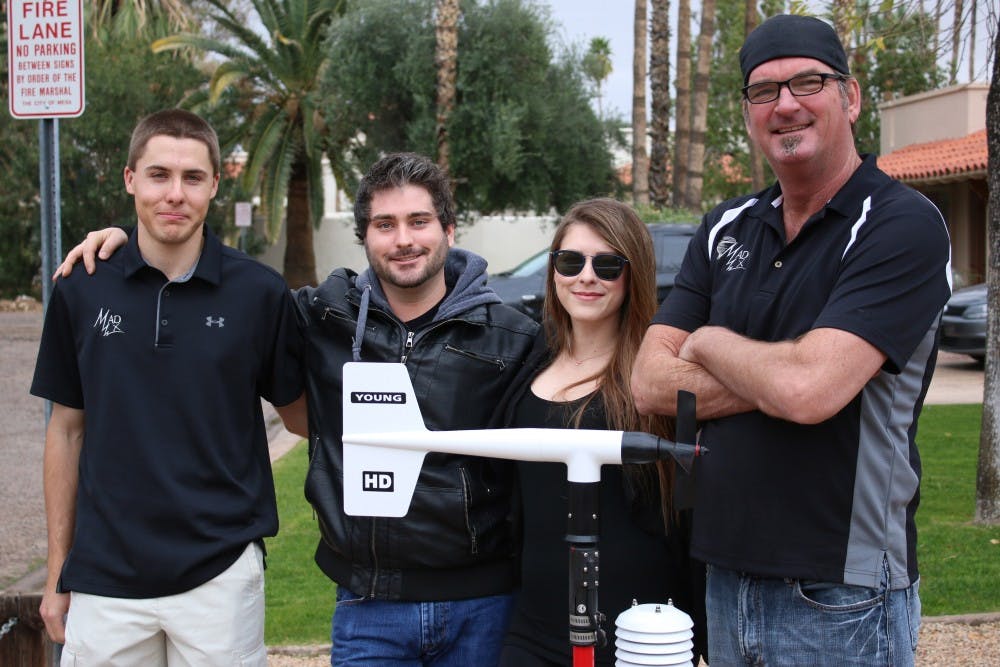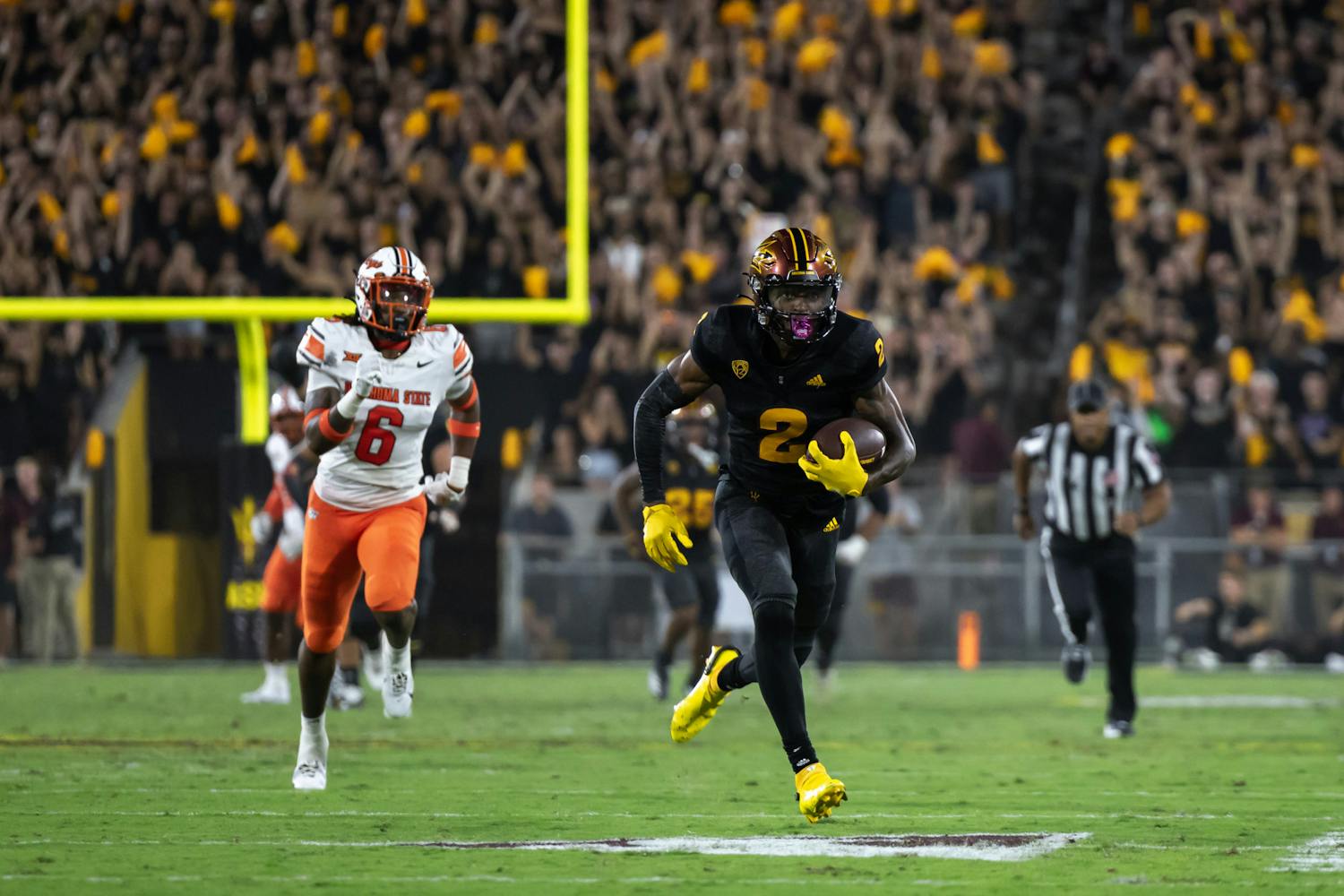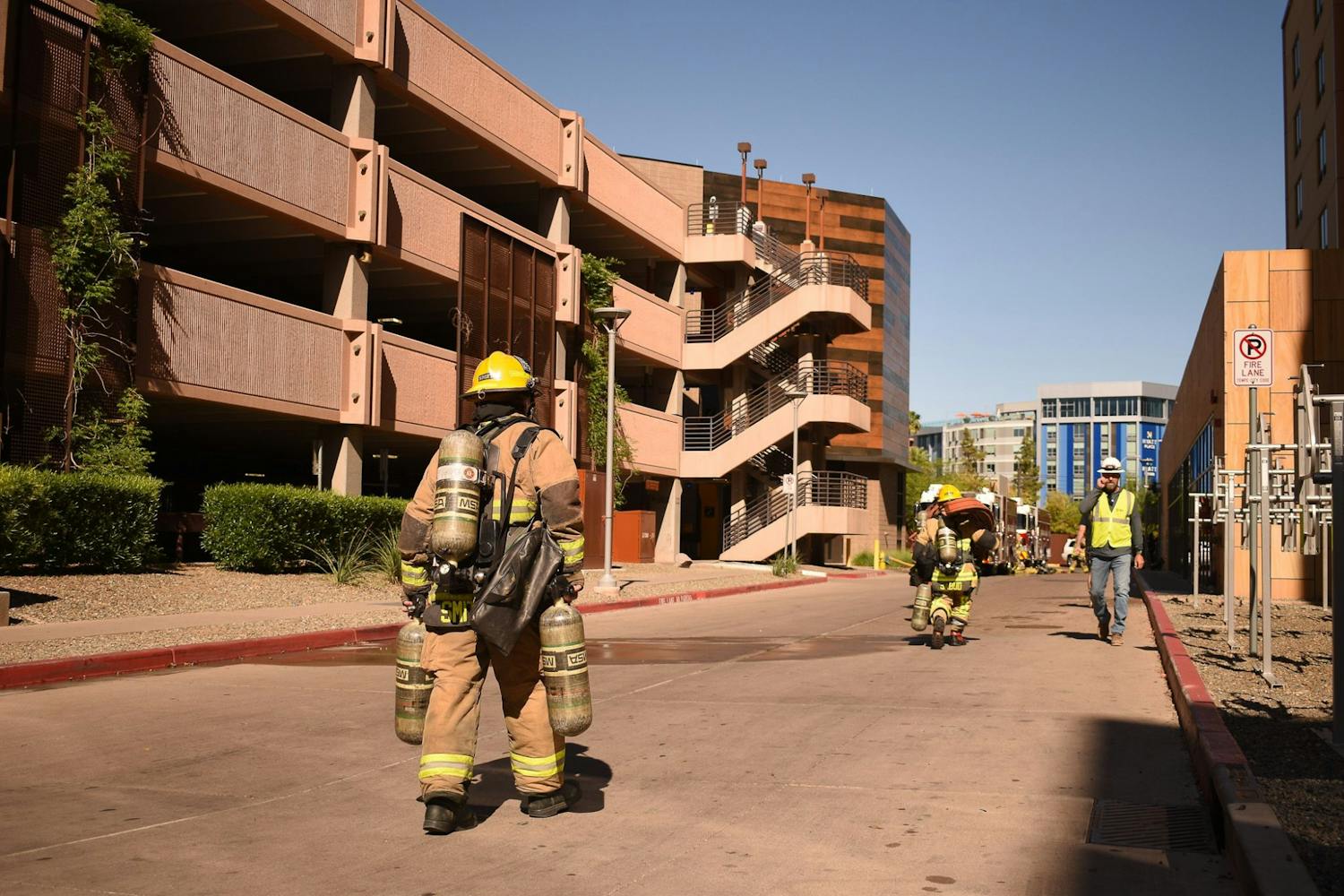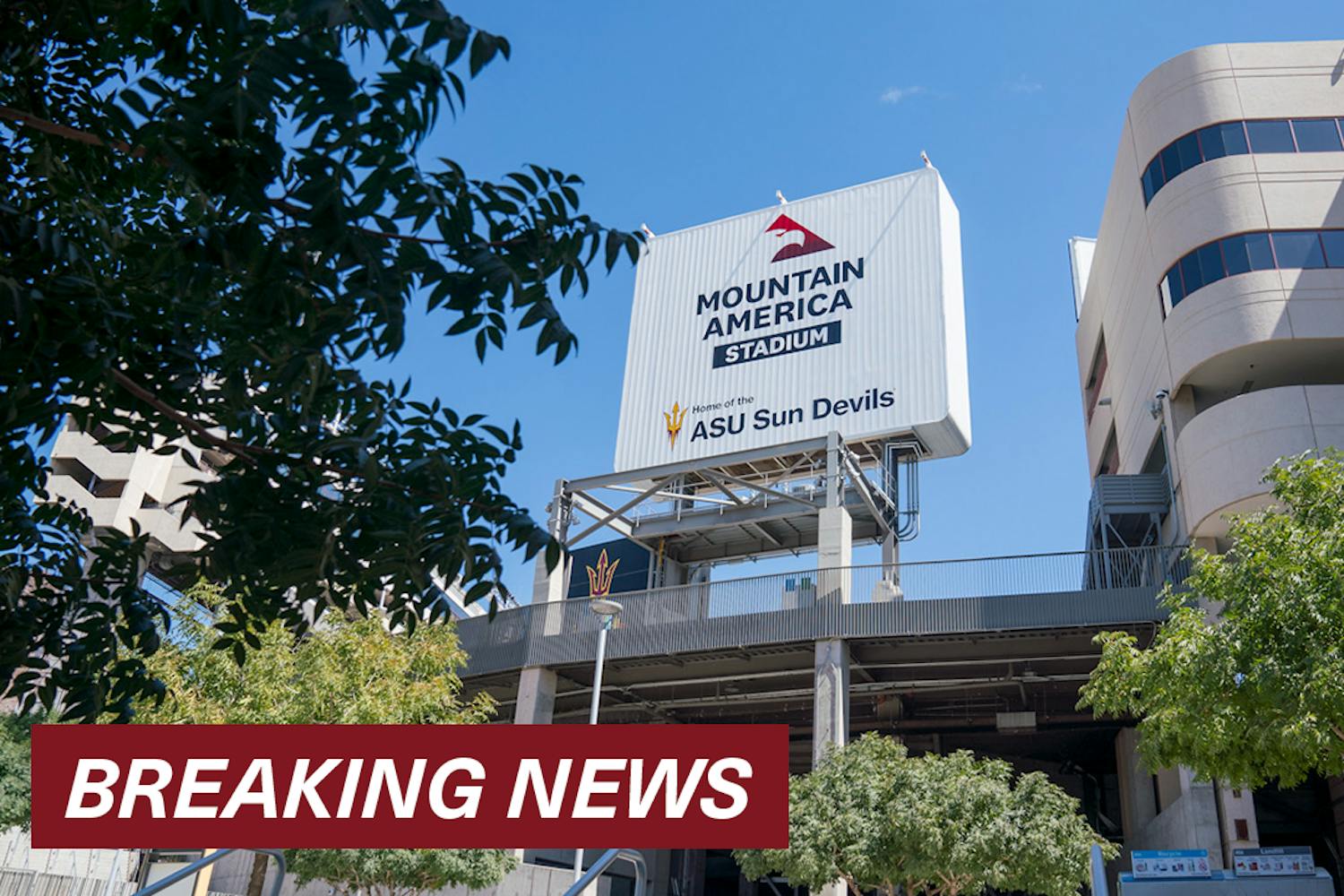The Great Plains region is stage to hundreds of deadly tornadoes every year, and while residents across the region may evacuate the area, one ASU student and a few other storm chasers will face them head on with a weather probe.
Trey Greenwood, a meteorology and climatology senior at the ASU School of Geographical Sciences and Urban Planning, plans to use a custom built weather probe, fitted with cameras and instruments, to study how tornadoes work. He and his team will analyze the data they collect to better understand why some storms produce tornadoes and others do not.
Greenwood is part of a group of storm chasers from Arizona, known as MadWx, which travels to the Midwest in the spring to chase storms and tornadoes.
Three days after the project planning began in March 2017, Corbin Jaeger, a storm chaser and member of Greenwood's team, died in a car accident in Texas. Greenwood and his team decided to finish their work in honor of Jaeger. According to their website, they named the probe Corbin-March 2017, or CM-17.
Greenwood said that he wants to study the environment surrounding tornadic storms as well as the interior of tornadoes to get a more comprehensive idea of how they form.
“Maybe we can work with some of the higher ups, like the Center for Severe Weather Research ... (and) just continue to figure out tornadoes, because we really still don’t know near enough of what we need to know to keep people safe,” Greenwood said.
Greenwood wants the probe to capture a range of weather data as well as video footage of a close encounter with a tornado.
“Most probes are either solely video probes or solely instrument probes,” Greenwood said. “We wanted to have a combination of both. We wanted to have the eyes to match the data.”
Getting the data is risky. The only way the MadWx team can get the device to the tornado is to drive into the tornado's path and drop the probe before the tornado can get to them. Crossing a tornado’s path is a dangerous goal, but Greenwood said that they feel they’ll be ready when the time comes.
“We have to get as close as we can safely, drop that probe quickly and get the heck out of there,” Greenwood said. “We’re probably going to have a minute and a half max to get this thing deployed.”
Christian Cleary, Greenwood’s storm chasing partner and a guide for Extreme Tornado Tours, said the risk is worth it.
“It’s all about the risk, dancing with the bear,” Cleary said.
On-board instruments will log barometric pressure, temperature, humidity and wind speed, which could top 300 mph, according to the radar observations of intense tornadoes. The probe has four GoPro cameras and one 360-degree panoramic camera, all surrounded by bullet proof glass and steel to protect them from debris.
Greenwood said he hopes that this data will expose whether temperature and humidity differences underneath a storm affect tornado formation.
Scotty Casbere, a veteran mechanic and fabricator who has worked on Pimp My Ride and competed for BattleBots, designed and built the CM-17 tornado probe.
Casbere made sure that the probe was sturdy and solid enough to withstand the winds and debris present in a tornado.
“We really put some thought into how it was constructed,” Casbere said. “Everything on it is all spun steel – it’s got a quarter inch plate of steel on the bottom.”
Casbere also built the pole that holds the anemometer, which measures wind speed and is made from the same material used in NASCAR vehicles.
Casbere said the inspiration for the probe’s white paint job came to him when he saw the golf ball-like Doppler Weather Radar at the Phoenix-Mesa Gateway Airport.
"How cool would it be to make our thing look like the radar ball?” Casbere said.
Greenwood said that he would like future iterations of the probe to include a radar to measure the inside of a tornado.
“That’s the ultimate goal, to get some sort of radar inside the tornado,” Greenwood said. “If we get a radar picture inside, we feel that we can really analyze tornadoes.”
Correction: An earlier version of this story stated that Corbin Jaeger died three days before planning for the probe began, but Jaeger died three days after planning began. The article has been updated to reflect the changes.
Reach the reporter at cscragg@asu.edu or follow @monsoonchaser on Twitter.
Like State Press on Facebook and follow @statepress on Twitter.




